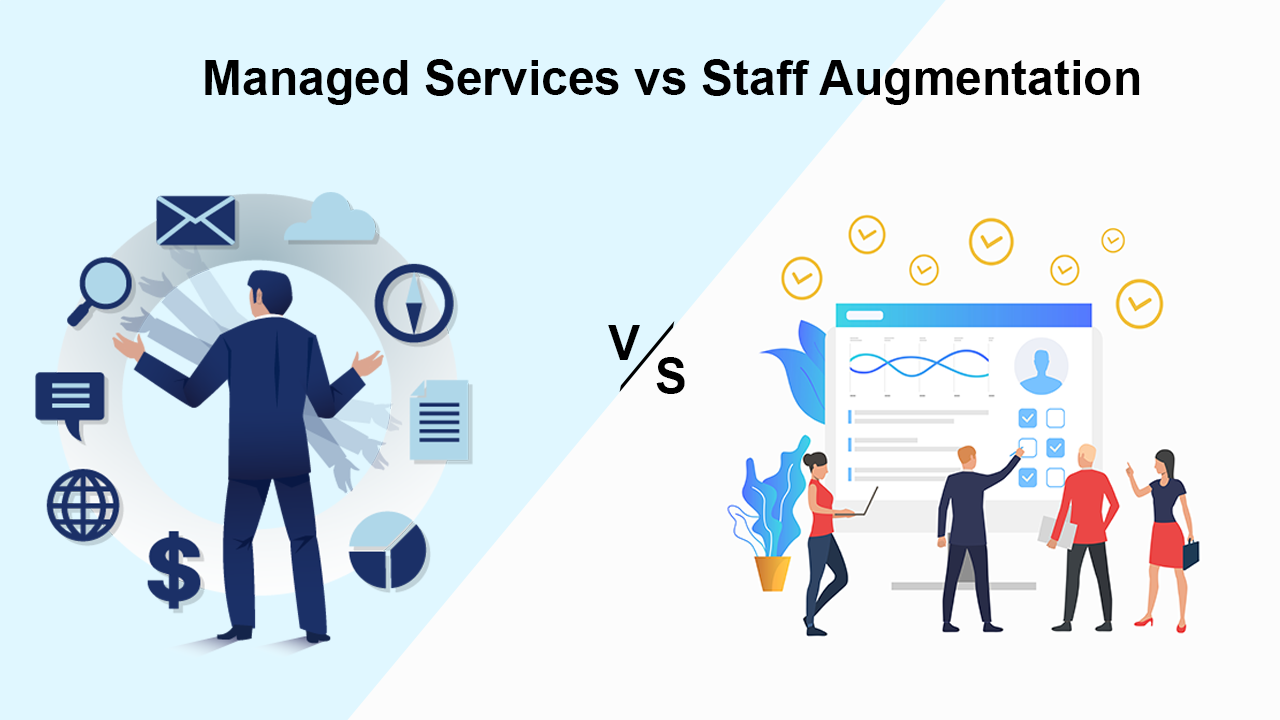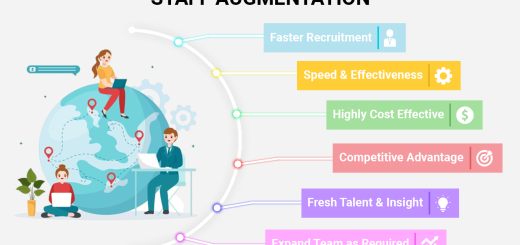Staff Augmentation vs Managed Services : Which IT Support Option is Right for Your Business? 2023

As businesses continue to rely on technology to drive growth and innovation, they need to have the right IT support in place. Two popular options for IT support are staff augmentation and managed services. In this blog, we’ll compare the two options to help businesses understand the differences and determine which option is best for their needs.
Staff Augmentation:
Augmentation service is a flexible IT support option where businesses hire external IT professionals on a temporary or project basis to fill skill gaps within their organization. The external IT professionals work alongside the internal team to support specific projects or ongoing IT needs. Staff addition is beneficial for companies that require specialized skills for a short-term project or don’t have the budget for full-time employees.
Benefits of Staff Augmentation:
1. Flexibility: Staff addition allows companies to scale their IT support team up or down as per their business requirements.
2. Access to Specialized Skills: Augmentation provides access to specialized skills that may not be available in-house, enabling businesses to complete specific projects more efficiently.
3. Cost-Effective: Augmentation is often more cost-effective than hiring full-time employees, as companies only pay for the specific skills required.
Challenges of Staff Augmentation:
1. Integration: Integrating external resources into the internal team can be challenging, particularly if the team is not used to working with external resources.
2. Quality Control: Ensuring the quality of work from external resources can be challenging.
3. Coordination: Coordinating work between internal and external teams can be challenging, particularly if there are different work cultures and communication styles.
Managed Services:
Managed services provide businesses with ongoing IT support and maintenance, typically through a service-level agreement (SLA) with a managed service provider (MSP). MSPs provide a range of IT services, including network and infrastructure management, data backup and recovery, and cybersecurity. Managed services are beneficial for businesses that require ongoing IT support and maintenance but don’t have the in-house resources to manage their IT infrastructure.
Benefits of Managed Services:
1. Expertise: Manage service providers have specialized expertise in managing IT infrastructure, enabling businesses to focus on their core competencies.
2. Proactive Maintenance: Manage service providers offer proactive maintenance, identifying and addressing potential issues before they become major problems.
3. Predictable Costs: Manage services have predictable costs, as the MSPs typically charge a flat fee for their services.
Challenges of Managed Services:
1. Lack of Control: Manage services can result in a lack of control over IT infrastructure, as the MSPs manage the infrastructure on behalf of the business.
2. Long-Term Commitment: Manage services often require a long-term commitment, which can be challenging for businesses with fluctuating IT needs.
3. Pricing Models: MSPs have different pricing models, which can be challenging for businesses to understand and compare.
Conclusion:
In conclusion, staff augmentation and manage services are two popular IT support options, each with its own benefits and challenges. Staff addition is a flexible and cost-effective option for businesses that require specialized IT skills for specific projects. In contrast, managed services offer ongoing IT support and maintenance and proactive management of IT infrastructure. Ultimately, businesses need to evaluate their IT needs and budget to determine which option is best suited for their requirements.











